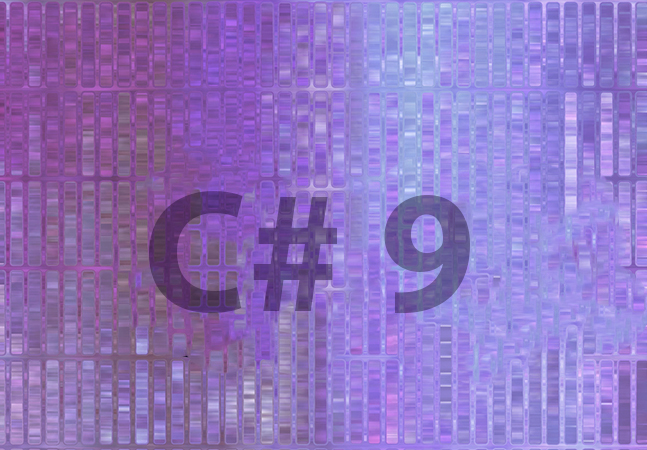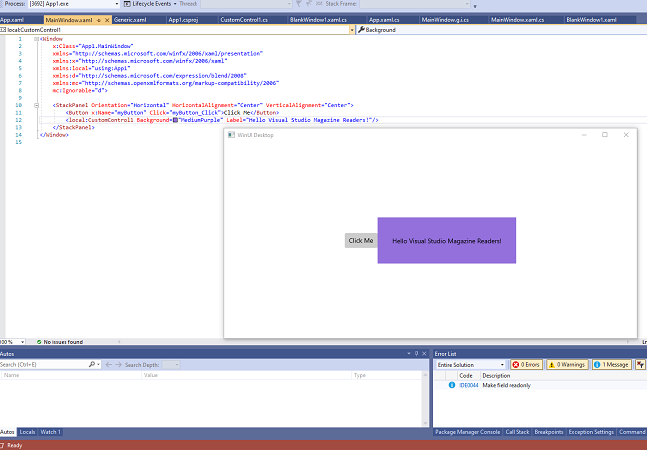
The dotnet monitor tool that debuted as an experimental tool last year is now fully supported, helping developers access diagnostics information in a dotnet application.

The Rust programming language is gaining traction in the .NET community, both with Microsoft and among front-line developers.

C# 9 gives you a better way to create value objects and some simpler code to use while doing it. But even if you don't care about value objects, the new keyword has some cool changes.

Echoing an earlier report on the popularity of ASP.NET in the .NET/C# tech stack, a new survey from the .NET Foundation finds the web framework dominates the ranking of app models used by respondents.

Microsoft and several other industry heavyweights have joined to incorporate the Bytecode Alliance, on a mission to create new software foundations based on standards such as WebAssembly, a key component of Microsoft's Blazor project that allows for web coding with C# instead of JavaScript.

The Oqtane project -- a modular application framework for Blazor -- has been updated with more templating functionality, along with user experience (UX) improvements and fixes.

There's nothing about development tools such as Visual Studio and VS Code in the announcement of Microsoft's new five-year accessibility push, although they have long been getting such functionality from the dev teams.

Polling more than 19,000 developers, the new "Developer Economics State of the Developer Nation, 20th Edition," report is out, finding that C# has ticked up a notch in popularity, overtaking PHP for No. 5 on that ranking. What's more, the big twice-yearly report identifies what areas are most and least popular for coding in Microsoft's flagship programming language.

"Epic fail," commented a developer who this week tuned in to a livestreamed ASP.NET Community Standup event on "ASP.NET Core updates in .NET 6 Preview 3" in which Daniel Roth, principal program manager (the head guy) for ASP.NET, struggled with a Blazor Hot Reload demo.

Unity Technologies, known for its real-time development platform used widely for gaming apps, has detailed its plans for incorporating new changes in .NET and C# being pushed out by Microsoft.

After Microsoft addressed a top developer feature request with this week's sneak peek at the upcoming 64-bit Visual Studio 2022, what else is in the works?

Development toolmaker GrapeCity issued the year's first update to its ComponentOne toolkit of UI controls, adding new features for Microsoft's red-hot Blazor project and .NET 5 Windows Forms and Windows Presentation Foundation applications.

Hot topics were: 64-bit; support (or perceived lack thereof) of Azure DevOps; Linux; the legacy .NET Framework; and even refreshed icons.

Visual Studio 2022 will be previewed this summer as a 64-bit application, opening up gobs of new memory for programmers to use. "Here's to no more out-of-memory exceptions. 🎉"

Microsoft announced Visual Studio 2019 v16.10 Preview 2, focusing on "developer productivity and convenience" with new features for .NET, Containers, C++, Accessibility and more.

"Now Windows joins Android, iOS, and macOS as target platforms you can reach with .NET MAUI!"

With the controls, developers can embed Blazor code into existing apps that run on .NET 6, a unifying, all-things-.NET umbrella framework going GA in November.

.NET 6 Preview 3 includes early Hot Reload support for ASP.NET Core/Blazor web apps, furthering a push to make it available across the entire tooling gamut.

C# standardization is now being carried out in an open source GitHub repo that details ongoing work to document the standard for the latest C# language versions.

Yes, you can use .NET MAUI within VS Code -- if you're handy with a CLI and don't mind extra work and missing features. For the full experience, the Visual Studio IDE is the place to be.